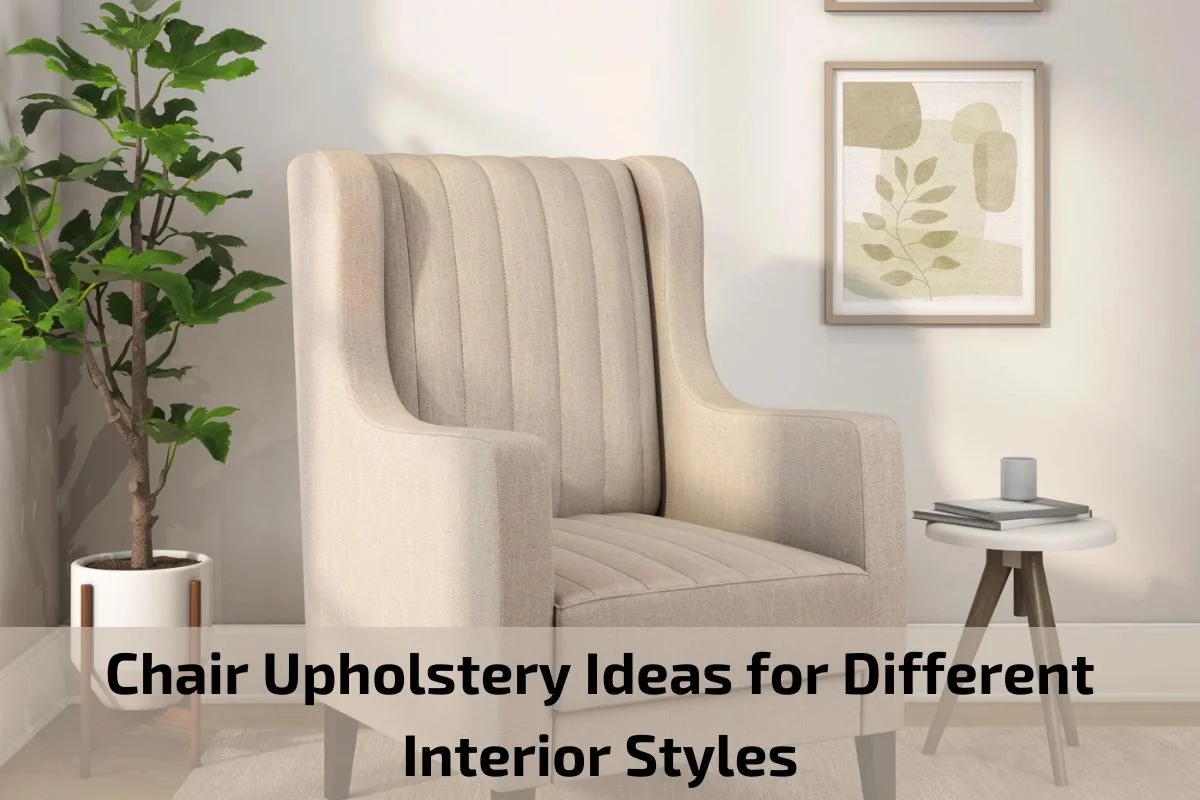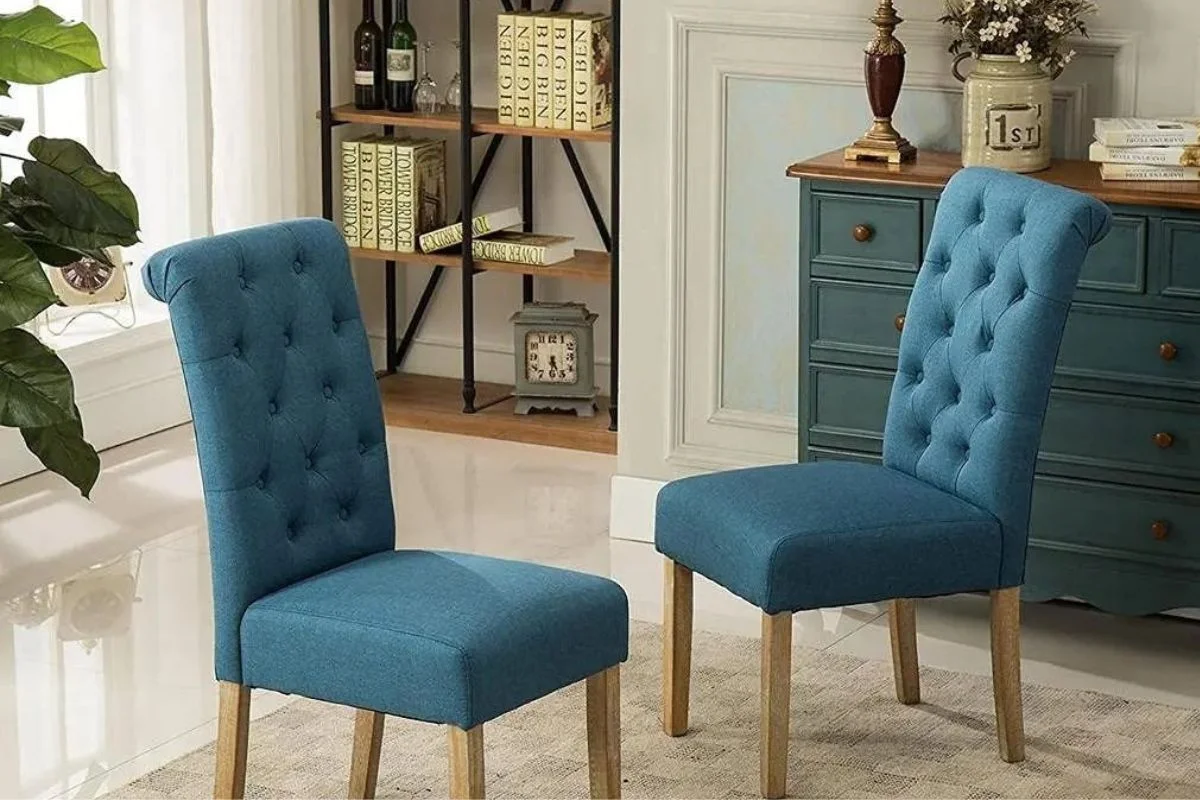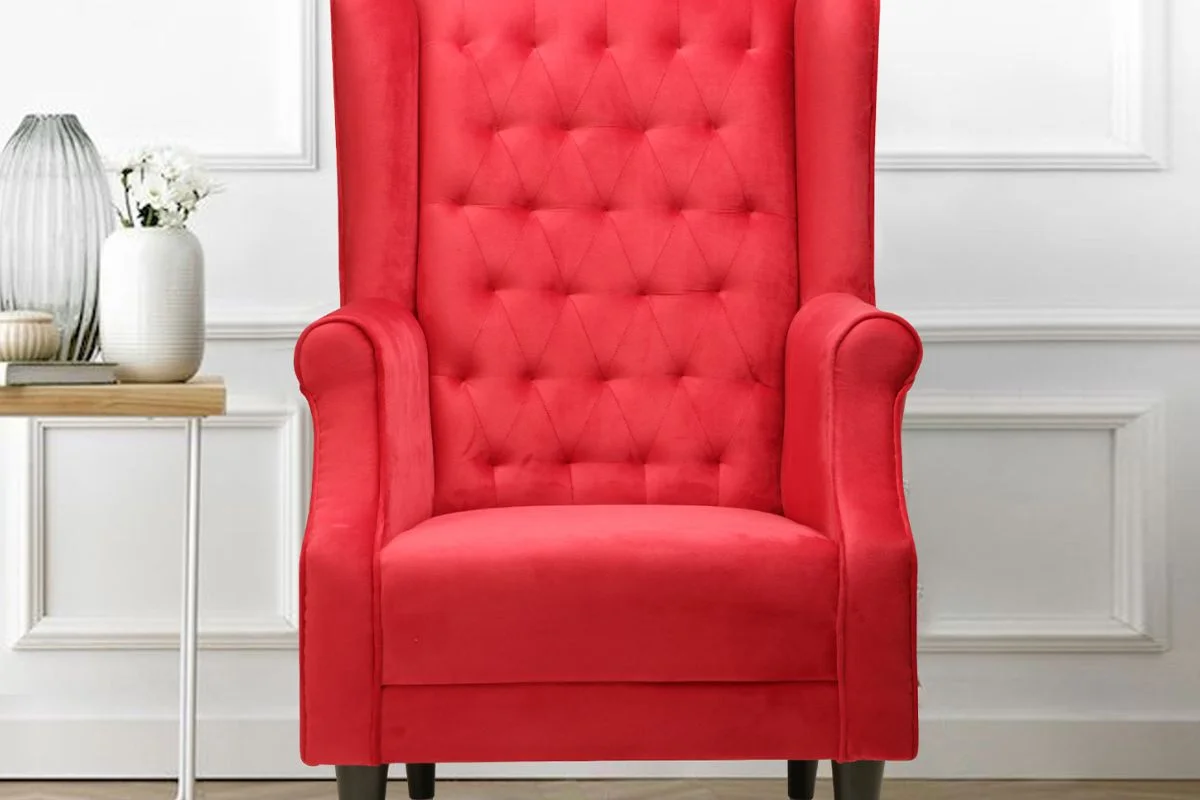Your choice of chair upholstery plays a significant role in defining the aesthetic appeal of your interior space. Whether you’re aiming for a classic, contemporary, or eclectic look, the upholstery fabric, color, and texture can all contribute to the overall style and ambiance of the room. From sleek and modern to cozy and rustic, there are countless chair upholstery ideas to suit every interior style.
In this article, we’ll explore a variety of chair upholstery ideas tailored to different interior styles, providing inspiration and guidance for elevating your home decor. Whether you’re furnishing a minimalist apartment, a traditional living room, or a bohemian-inspired space, we’ll showcase how the right choice of upholstery can enhance the visual appeal and functionality of your chairs.
Join us as we embark on a journey through various interior styles, from sleek and sophisticated to eclectic and whimsical, discovering how chair upholstery can transform your space into a reflection of your personal taste and lifestyle. Whether you’re a fan of timeless elegance, contemporary chic, or vintage charm, let these chair upholstery ideas inspire you to create a truly stylish and inviting home environment.
Brief overview of the importance of chair upholstery in interior design
Chair upholstery plays a pivotal role in interior design, serving as both a functional and aesthetic element within a space. Beyond providing comfort, upholstery adds texture, color, and personality to chairs, making them standout pieces in any room. Whether it’s a sleek modern chair or a classic wingback, the upholstery fabric and style can completely transform the look and feel of the furniture, tying together the overall design scheme of the room. Additionally, chair upholstery offers versatility, allowing homeowners to refresh their interiors without the need for costly furniture replacements. Ultimately, chair upholstery is a key tool in the arsenal of interior designers and DIY enthusiasts alike, offering endless possibilities for enhancing and revitalizing living spaces.
Definition of chair upholstery and its components
Chair upholstery refers to the process of covering chairs with padding, fabric, leather, or other materials to provide comfort, protection, and aesthetic appeal. It involves several components, each contributing to the overall structure and appearance of the upholstered chair:
Frame: The foundational structure of the chair, typically made of wood, metal, or plastic. The frame determines the shape and stability of the chair.
Padding: Layers of cushioning material, such as foam, cotton batting, or polyester fiberfill, placed over the frame to provide comfort and support for the seated individual.
Upholstery Fabric: The outer covering of the chair, chosen for its durability, texture, color, and pattern. Common upholstery fabrics include linen, velvet, leather, cotton, and polyester.
Springs: In some upholstered chairs, springs may be used to provide additional support and resilience to the seat and back cushions.
Webbing or Support System: Depending on the chair design, a webbing system or other support structure may be used to evenly distribute weight and enhance the comfort and durability of the upholstery.
Trim: Decorative elements such as piping, welting, or nailhead trim may be added to enhance the aesthetics of the upholstered chair and to conceal seams or edges.
Importance of quality upholstery for chair longevity and comfort
The importance of quality upholstery cannot be overstated when it comes to the longevity and comfort of chairs. Here’s why:
Durability: High-quality upholstery materials, such as sturdy fabrics and resilient padding, are essential for ensuring that chairs withstand regular use and wear over time. Durable upholstery can resist tearing, fraying, and fading, preserving the chair’s appearance and structural integrity for years to come.
Comfort: Comfort is paramount when it comes to seating, whether it’s for dining, lounging, or working. Quality upholstery provides adequate cushioning and support to ensure that chairs remain comfortable even during extended periods of use. Proper padding and fabric selection can prevent discomfort from sagging cushions or rough textures, enhancing the overall seating experience.
Aesthetic Appeal: Quality upholstery enhances the visual appeal of chairs, contributing to the overall ambiance of a room. Whether it’s a luxurious velvet fabric or a sleek leather upholstery, high-quality materials elevate the look of chairs, making them focal points of the space. Additionally, well-maintained upholstery retains its appearance over time, maintaining the attractiveness of chairs for years to come.
Investment Value: Investing in quality upholstery is an investment in the longevity and value of chairs. While it may require a higher upfront cost, durable and comfortable upholstery extends the lifespan of chairs, reducing the need for frequent replacements. Quality upholstery also adds perceived value to chairs, making them more desirable assets in the long run.
Health and Safety: Quality upholstery materials are often manufactured with health and safety standards in mind, ensuring that chairs are free from harmful chemicals or allergens. Choosing upholstery fabrics with certifications such as OEKO-TEX or CertiPUR-US can provide peace of mind regarding indoor air quality and overall safety.
Chair Upholstery Ideas for Different Styles
When it comes to chair upholstery, there’s a wealth of creative possibilities to suit various interior design styles. Here are some chair upholstery ideas tailored to different aesthetic preferences:
Classic Upholstery:
- Opt for timeless fabrics such as neutral-colored linen or traditional patterns like damask or floral prints.
- Choose classic upholstery techniques like button tufting or welted seams for an elegant touch.
- Consider traditional chair styles such as wingback or camelback chairs for a sophisticated look.
Modern Upholstery:
- Embrace clean lines and minimalistic designs with solid-colored upholstery fabrics in shades like white, gray, or black.
- Select sleek and smooth fabrics such as leather or faux leather for a contemporary feel.
- Experiment with geometric patterns or bold colors for a modern twist on upholstery.
Eclectic Upholstery:
- Mix and match different upholstery fabrics, textures, and patterns to create a unique and eclectic look.
- Combine vintage-inspired fabrics with modern chair silhouettes for an eclectic yet cohesive style.
- Incorporate unexpected elements like embroidery, fringe, or metallic accents for added visual interest.
Vintage Upholstery:
- Explore retro-inspired upholstery fabrics such as mid-century modern prints, tweed, or corduroy.
- Look for vintage or retro chair styles such as Eames-inspired lounge chairs or Scandinavian design classics.
- Consider reupholstering antique or thrifted chairs with nostalgic fabrics to breathe new life into old pieces.
Rustic Upholstery:
- Opt for natural materials like burlap, jute, or distressed leather for a rustic aesthetic.
- Choose earthy tones such as brown, beige, or olive green to complement rustic decor.
- Incorporate rustic elements like wooden frames, nailhead trim, or exposed stitching for a cozy and inviting feel.
Bohemian Upholstery:
- Embrace vibrant colors, intricate patterns, and global-inspired motifs for a bohemian vibe.
- Mix and match eclectic fabrics such as kilim, ikat, or tribal prints for a layered and textured look.
- Incorporate decorative elements like tassels, pom-poms, or fringe to add whimsy and personality to upholstered chairs.
Choosing the Right Upholstery Fabric
Choosing the right upholstery fabric is essential for ensuring both the visual appeal and durability of your chairs. Here’s a comprehensive guide to help you make the perfect selection:
Consider Durability: Assess the intended use of the chairs and choose a fabric that can withstand the level of wear and tear expected. For high-traffic areas or households with pets and children, opt for durable fabrics like heavy-duty cotton, polyester blends, or microfiber.
Evaluate Texture: The texture of the upholstery fabric can significantly impact the overall look and feel of the chairs. Consider the tactile qualities of different fabrics, such as smooth leather for a sleek and luxurious finish, or plush velvet for added warmth and comfort.
Factor in Color and Pattern: Select upholstery fabric colors and patterns that complement your existing decor scheme while adding visual interest to the room. Neutral tones like beige, gray, or navy blue offer versatility and timeless appeal, while bold patterns or vibrant hues can make a statement and inject personality into the space.
Assess Maintenance Needs: Consider the practicality of maintaining the upholstery fabric and choose accordingly. Fabrics with stain-resistant treatments or easy-to-clean properties are ideal for busy households or commercial settings. Additionally, removable and washable covers can simplify maintenance and extend the lifespan of the chairs.
Think About Comfort: Upholstered chairs should not only look good but also provide optimal comfort for seating. Select fabrics that offer sufficient softness and cushioning, such as plush chenille, soft cotton, or supportive foam-backed upholstery.
Explore Specialized Fabrics: Depending on specific requirements or preferences, explore specialized upholstery fabrics tailored to unique needs. For example, outdoor chairs may benefit from weather-resistant fabrics like Sunbrella, while eco-conscious consumers may prefer sustainable options like organic cotton or recycled materials.
Test Samples: Before making a final decision, obtain fabric samples and test them in the intended space to evaluate how they look and feel in different lighting conditions. Consider factors such as sheen, texture, and how the fabric complements other elements in the room before committing to a particular choice.
Chair Upholstery Maintenance and Care
Proper maintenance and care are essential for preserving the beauty and longevity of upholstered chairs. Here’s a comprehensive guide to help you keep your chairs looking fresh and inviting:
Regular Vacuuming: Use a soft brush attachment to gently vacuum upholstered chairs regularly, removing dust, crumbs, and debris that can accumulate over time. Pay special attention to crevices, seams, and tufted areas where dirt may be trapped.
Spot Cleaning: Promptly address spills and stains by blotting them with a clean, absorbent cloth or paper towel. Avoid rubbing or scrubbing, as this can spread the stain and damage the fabric. Use a mild detergent or upholstery cleaner recommended for the specific fabric type, following the manufacturer’s instructions carefully.
Professional Cleaning: Consider hiring a professional upholstery cleaning service to deep clean your chairs periodically, especially if they are heavily soiled or stained. Professional cleaners have the expertise and equipment to effectively remove dirt, odors, and stubborn stains without causing damage to the fabric.
Protective Measures: Take preventive measures to protect upholstered chairs from spills and stains. Consider applying a fabric protector or stain repellent treatment to newly upholstered chairs to create a barrier against liquid absorption. Use coasters, placemats, or protective covers to shield chairs from food and beverage spills during use.
Sunlight Protection: Avoid placing upholstered chairs in direct sunlight, as prolonged exposure can cause fading and deterioration of the fabric. Use curtains, blinds, or UV-blocking window films to shield chairs from harmful UV rays and minimize color fading over time.
Fluff and Rotate Cushions: Periodically fluff and rotate seat and back cushions to maintain their shape and even out wear. This helps prevent sagging and ensures consistent comfort and support for seated individuals.
Avoid Harsh Chemicals: Refrain from using harsh chemicals, bleach, ammonia, or abrasive cleaners on upholstered chairs, as they can damage the fabric and underlying padding. Stick to mild cleaning solutions and gentle cleaning techniques to preserve the integrity of the upholstery.
Regular Inspection: Routinely inspect upholstered chairs for signs of wear, tear, or damage, such as loose seams, frayed edges, or broken springs. Address any issues promptly to prevent further deterioration and ensure the continued structural integrity of the chairs.
Conclusion
In conclusion, chair upholstery is a versatile and essential aspect of interior design, offering both aesthetic appeal and practical functionality. From selecting the right fabric to maintaining and caring for upholstered chairs, there are various considerations to ensure their longevity and visual appeal.



